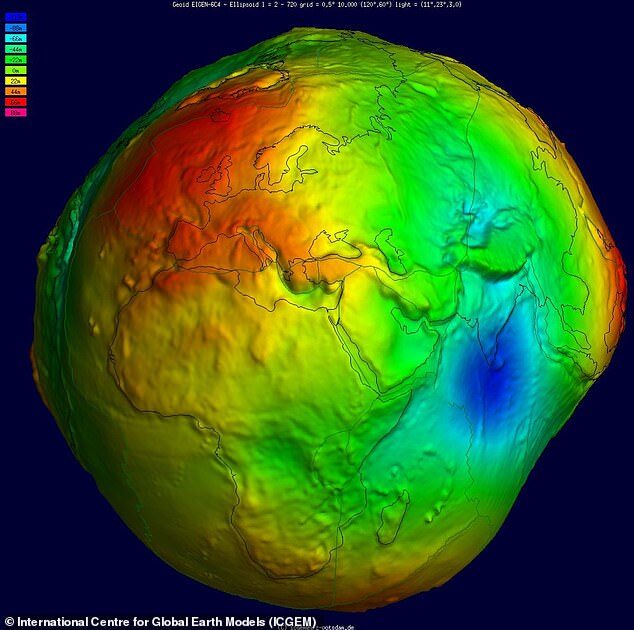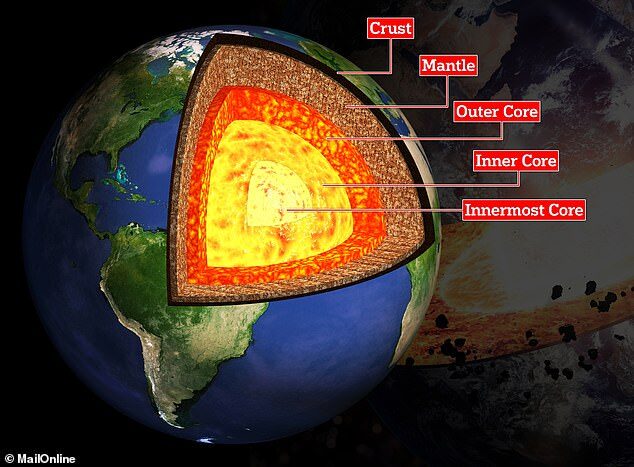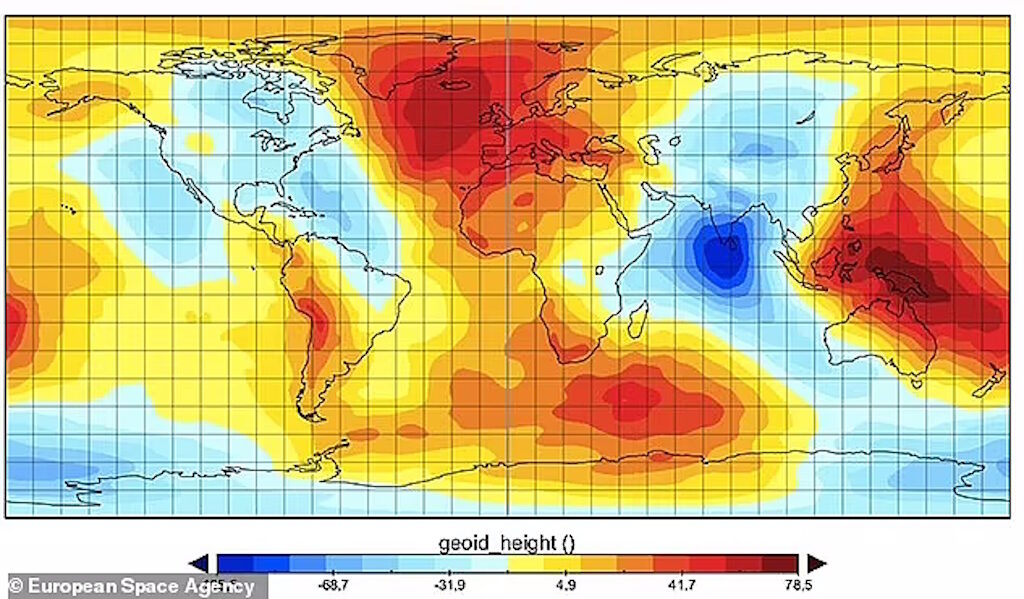
Scientists have known about the existence of a 'gravity hole' in Indian Ocean for decades but have long been left puzzled as to why it exists.
Known officially as the 'Indian Ocean Geoid Low', it isn't a conventional physical hole, but rather a region of the ocean where gravity is lower than average. This dip in gravity means the water level is around 340 feet lower than the surrounding area - like a groove in a 'bumpy potato'.
Now, a team of researchers in India claim the gravity hole was formed by plumes of low-density magma that rose up from Earth's mantle.
These plumes were generated by the remains of a sunken tectonic plate called Tethys, lost when India became part of Asia 50 million years ago.

The new study was conducted using computer simulations by two geophysicists at the Indian Institute of Science in the city of Bengaluru.
'Using these simulations we could see this geoid low being non-existent at some point and then taking shape at about 20 million years ago,' study author Attreyee Ghosh told MailOnline.
'Such kind of studies would help us address many of the Earth's still unresolved features in the future.'
Earth is often depicted as a perfectly round sphere in illustrations and physical globes, but experts think it's more like a 'bumpy potato' in terms of its shape.

No more is this illustrated than by the Indian Ocean Geoid Low, which can be found around 700 miles south of the Indian peninsula.

While we have sent missions to probe the outer reaches of our solar system, the deepest boreholes on Earth go down to only a few miles, so looking for answers within our planet is somewhat of a challenge.
To address this, the experts used computer software to track how Earth's tectonic plates may have moved around the hole in the past 140 million years. Violent interactions between the tectonic plates may hold clues about why this gravitational anomaly exists today, they figured.
It's well known that Earth's lithosphere - its rocky, outermost shell - is formed of around 15 tectonic plates that are constantly moving and grinding past each other.



Comment: Missing mass - what is causing a geoid low in the Indian Ocean?